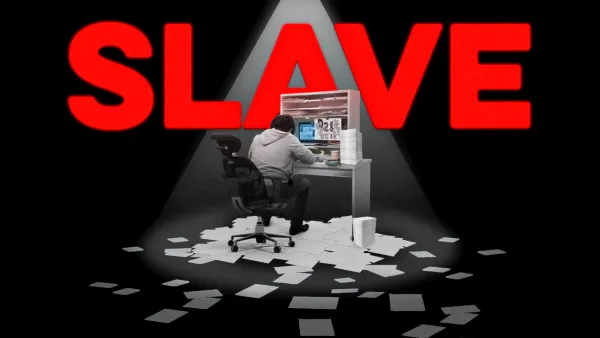Reaching the heights of almost $25 Billion dollars, anime is a market that has exploded in the past decade, outputting some of the most stunning stories, animations, and visuals the world has ever seen.
However, for so much success - for so much fanfare - the anime industry itself is shrouded in a fog; not because it's actually mysterious, but because people just don't particularly care enough to look through the glass.
This article expands on my documentary piece that explores how anime became an industry that pays its workers $5/day - apathetic workers that don't seem to care about the plight they're in, to a world that's ignorant, whether out of choice or not.
So - assuming you've watched the video already (or went and watched it, this article will still be here after you're done!) - let's briefly discuss some of the finer points that, for the sake of not overcomplicating an already 30 minute video with an 8 month production span, like
Questions like, well -
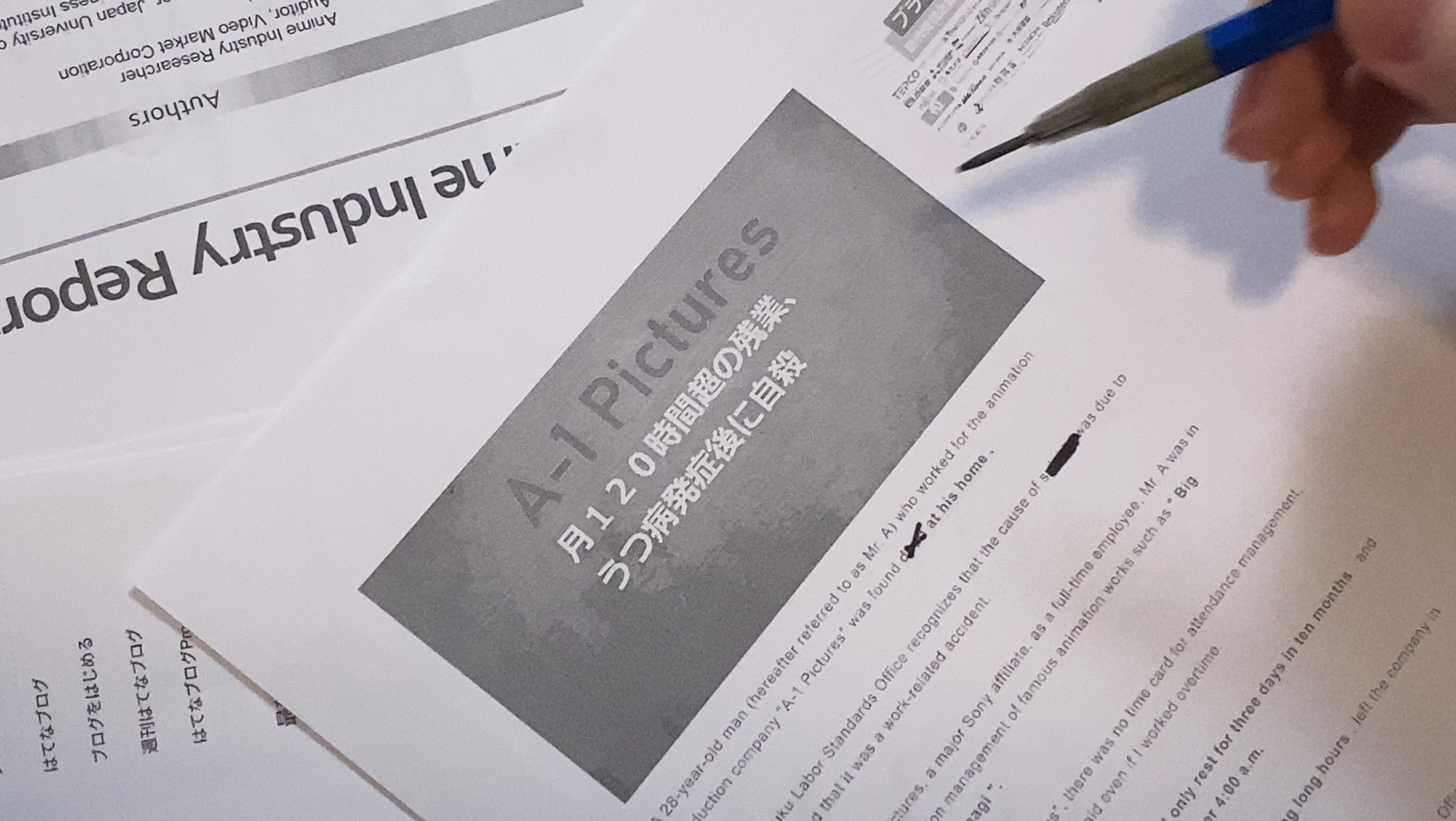
Did A1 actually get off scot free?
Surely employee suicide would make some headlines?
Yes.
Well - technically no, if any form of consequence is included A1 definitely did not get off scot free. The sheer amount of news headlines that the suicide made was not something to be scoffed at, even enough to make headlines in the English websphere - which is saying a lot.
Beyond that A1 did face legal repercussions, though probably not what you're expecting and/or hoping. The family of the deceased managed to get "workers compensation benefits" (whatever that means), and A1 was explicitly implicated in the case, but that's about it.
At the onset of this implication A1 said the following:
If this decision is true, it is unexpected and we cannot comment because the reason for the judgment is unclear.
which is up there with being one of the most corporate responses to a tragedy they caused as I've ever seen. In fact, I think it's made even worse when you discover this:

過労死ライン
The Japanese Government's Official and Legally set "Death Line"
Japan is well known for being one of the harshest countries to work for - the saying goes if you're going to live in Japan, make sure you have a way to make money that's not actually working in the country.
Karoshi (過労死) is officially translatable to "Death by Overwork," something that happened to our unfortunate animator at A1 alongside many others working in manga, anime, and etc. Hearing this, the first thought that probably comes to your head is that, well, "The government should do something about this, right?"
Lucky for you, the government did do something about it. Though the obvious solution to solving the overwork problem (making it illegal) was not deployed; and admittedly would've been pretty much impossible to deploy anyways seeing how much the country seems to work. Instead the government set up a set of guidelines that outlined exactly what constituted excessive overwork, or as it's labeled - the "Death by Overwork line"
While I am not good enough at Japanese to decipher the finer details of Japanese Law, the line in principle is not actually there as an automatic weapon to implicate any companies caught red-handed for working their employees over this line, but more simply there to help establish a causal relationship between overwork and bodily symptoms of disease. Through the use of a satisfactory amount of overtime hours (typically 45-100+) in a certain period (typically 2-3 months) before the development of a disease (like cardiovascular or otherwise) an implication can be made - but nowhere I read actually said that the line can be used to implicate death or suicide. Though to be fair, I probably just missed it since I was reading summaries of the thing on wikipedia and not the actual document itself.
Needless to say though, if death/suicide wasn't included in the original law, there would be enough loopholes that exist that the chain of logic of overwork -> depression -> suicide could be cut before the final act as the law doesn't explicitly state any connection there could be made.
This would probably explain why even though A1 (and later MADHOUSE) were in gross violation of this Karoshi Line, that none of them actually got any significant consequence from it beside just some headlines and some money they effectively had to throw at the victims' families to make them and the courts get off their back.
Getting back into my lane and out of the world of a foreign country's politics, this would probably explain the quote of an anime director Daiki Nishimura who said that
"A-1 Pictures is not at fault... the current state of the entire business world that includes A-1 Pictures is at fault. To denounce A-1 Pictures alone is a mistake."
Which, is true. The entire Japanese business world is at fault here for building a system that allows this kind of stuff. But I wonder what part of denouncing A1 pictures is a mistake? This feels like a complicated way of saying "oh but he's doing it too!" Change starts gradually after all.
And I know that I said I'd stay out of the lawyers hair, but one more twist of irony - the Japanese Labor Laws set in 1947 state that
Working conditions shall meet the needs of workers to lead a worthy life.
Working unpaid overtime (any amount, let alone 100s of hours) doesn't seem like conditions that meets the needs to lead a worthy life do they?
Anyhow, let's move on. Of course, none of this is legal advice, go consult an actual Japanese lawyer and not some random guy across the Pacific Ocean. And as I said before, this isn't my lane anyways, so let's move our focus from the Japanese parliament to a few (many) blocks down to:
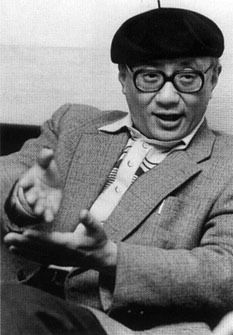
Osamu Tezuka - is he actually at fault?
Being a bitch doesn't mean he's guilty. Right?
In any conversation about the topic of working in anime, one of the main problems that comes up is that there simply isn't enough time to produce an anime a week constantly into perpetuity. And so a lot of people, understandably, decide that whoever came up with it must be the villain here. And trace your way back through a few links and you'll find that the godfather of animanga himself - Osamu Tezuka - was the one that came up with this whole upload schedule.
Though to be fair, Tezuka was no angel either - he was not very nice to work with in Toei (pretty much ignoring management and everyone else's input and concern in favor of his own opinions as a manga artist on how animation should be made), and even in his own studio he was known to slack off and make his employees pick up all his slack just for Tezuka to swing down and take credit for all of it.
But for all the bad rep the guy gets, is his pushing of anime production to one a week really the catalyst for everything wrong with the industry?
It didn't take a genius to realize that anime was a powerful export, regardless of whether or not Tezuka pushed the industry to its weekly upload schedule - in fact, this weekly upload schedule might have been the very thing that pushed anime to the heights it's at now. Imagine if suddenly the entire anime industry told us that in order to treat their workers more fairly, they were cutting down to uploading once or twice a month? How do you think the general public would react?
The issue that stonewalled what could've potentially been a thriving and prosperous industry for higher ups and workers alike may very well have been due to the situation Japan had caught itself in in the years prior and after Tezuka's propping up of Mushi Pro.
Beyond the fact that unions weren't particularly viable because of a general culture against it that still permeates today, Japanese workers tended to be used to working for very long hours because of an economic situation that the country found itself in the immediate aftermath of WWII

As you can see, Japanese GDP dropped by nearly half in the years of and following the WWII. This kind of ginormous economic downturn is, to put it simply, not easy to deal with, for everyone involved.
In this period of misfortune Japanese companies and Japanese workers seemingly formed an unsaid agreement with each other in terms of employment stability. The workers would work their asses off - and I mean work their asses off - in exchange for the company more or less guaranteeing the workers' job security. In this way the company didn't have to worry about losing its workforce, and the workers didn't have to worry about losing their job. Sounds like a pretty sweet deal.
This systematic trade off still somewhat permeates the country today. And with the entire culture revolving around the principle of working hard for your company like it's your family, it's unsurprising that the nascent anime industry also caught some of this principle in its workforce - though after a while, the company end of the bargain seemingly vanished while the workers still kept their half up.
Why? Well you already know why:

Outsourcing
A necessary evil?
Outsourcing work isn't some kind of foreign concept to anyone who's thought of scaling anything before, and it's very likely that a lot of smaller scale domestic outsourcing was present in the anime industry before international mass outsourcing anyways.
And while I mentioned that Mobile Suit Gundam was one of the anime that was marked as a pioneer in this sense, you can be damn sure that a lot of studios were looking to outsource to decrease their labor costs - it just happened that Sunrise had either the capital or network to do so. So in a way, this development was as inevitable as tech companies outsourcing tech support to other countries.
Though, the dominant wave of hiring people as independent contractors instead of employees didn't actually show up anywhere in my research. Certain sources allege that political developments like the devolution of what was previous government responsibilities to private sector companies during the Junichiro Koizumi cabinet inspired this employment shift away from permanent employees to independent contractors.

However, I'm skeptical.
For one, Junichio Koizumi was elected in 2001, which was well after outsourcing first became popularized thanks to Mobile Suit Gundam and just a general realization by corporations that if they did that they wouldn't have to pay as much to employees. And as shitty as it sounds, well, if your only sole focus was increasing the bottom line then it's not an illogical plan.
And does what the government do really set that much precedence for private companies?
Anyways, the point is beyond me as well since I don't live in Japan, nor do I know anything of its politics (or particularly care to know to be honest). Even if it was true that Koizumi's cabinet influenced this shift, I am not the person to be confidently affirming this claim - leave that to the politicians and historians, or at least someone that lived their life in the country.
But wait - didn't I mention a political figure in the video? What was his name again...?
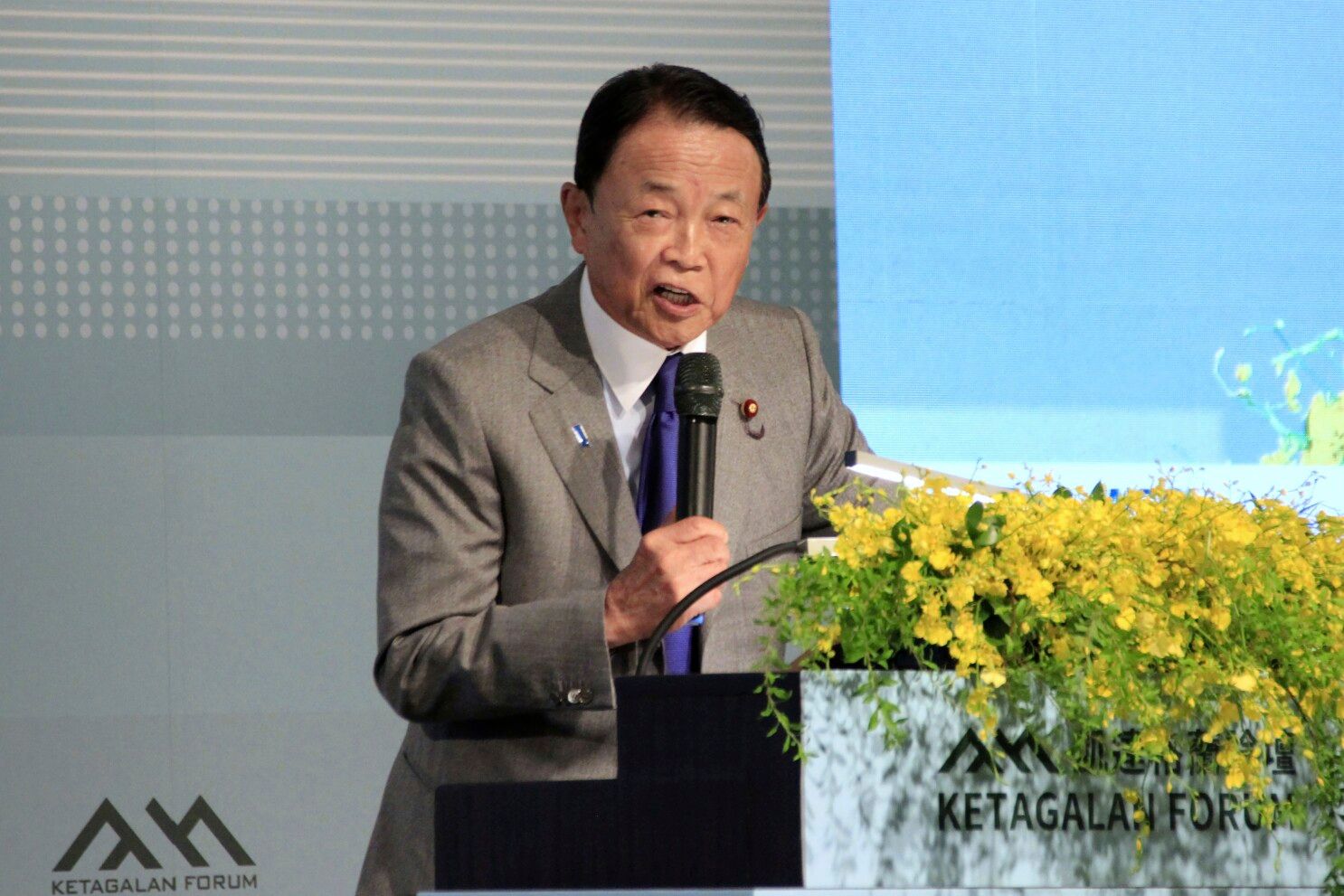
Taro Aso
And the Parliamentary League
I mentioned in the ending credits that Taro Aso "formed" the Parliamentary League for Manga, Anime, and Games (colloquially and hereafter referred to as MANGA). And while everything said on that slide was true, including Hideaki Anno coming to speak at its inaugural conference, whether or not the former Prime Minister now Finance Minister of the ruling party did it out of any sort of love for MANGA is yet to be determined.
In fact, it's likely that this was (as expected, to be honest) a maneuver based more on politics and economic reasons alone.
Japan was already quite aware of the fact that the components of MANGA was amongst one of its strongest cultural soft power exports (and I mean, it's kind of obvious). So why wouldn't the Finance Minister want to prop up the industries that, let's be frank, made Japan famous in the public eye?
In fact, this movement of exporting cultural soft power, known as Cool Japan, was a movement that was induced by the government to literally do this exact thing all the way back in the 1980s, focused on disseminating Japan's image of "being cool" to the global markets through anime, manga, video games, JPOP, etc, etc, etc. And I think it goes without saying that it definitively worked. On you. On me. On everyone.
Whether or not this Parliamentary League actually did anything I don't know.
Cursory searches across the web suggest that they wanted to give tax breaks to people working in anime/manga/etc to help relieve some financial burden and also restart the bungled International Media Art General Center initiative (I think that's the link?) that was shelved when the LDP (the party Taro Aso belongs to) was defeated. Whether or not any of this actually resulted in relief all the way on the ground is yet to be discovered. For now though, more and more stories keep coming out about overwork, underpay, etc. etc., so it's safe to say that the league's job is not done yet.
Though, is it even part of the league's job in the first place? Its mission is statement is simply to advance these arts in the national interest of Japan. You have to wonder if the national interest of Japan and the interest of the workers match up - hopefully they do, but there's been plenty of times where the government's goals and the plights of the people actually working don't line up completely.
Speaking of the people working on anime, what about the people that came up with the story in the first place?
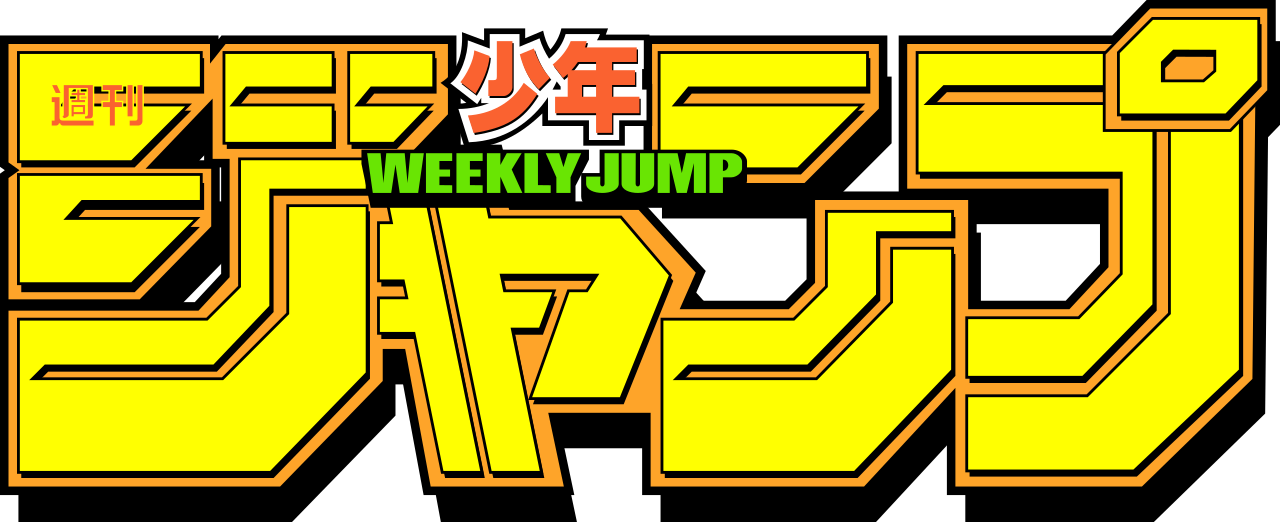
Manga Artists
What's their role in all of this?
This portion is going to be short, because at the end of the day manga artists, while the original creators of their stories, don't hold any power over how animators are treated.
And why would they? They're the creators of the story, not the people who contributed money to the actual production - they're very different things. If some mega rich manga artist successfully contributed his money to an anime's production directly, then he would be given the ownership share accordingly.
But manga artists don't have time for that. In fact, even with final power over how any creative portion of an anime should look, in the majority of cases it's the publishing company (in Jump's case, Shueisha) that makes decisions on behalf of the manga artist. Why? Well, manga artists have their own things to go tend to.
Like making manga. Of course, it's the manga artist's choice to dedicate his limited precious free time to going to tend to the anime - and in many cases they do - but it is impossible for them to pay it 100% of their attention all the time.
And if they do go in with final arbiting power, the people who actually funded the anime want to (if not have their own way) at least an honest discussion about it. But with so many companies funding the thing, just the discussion of it would drag out so long that it's not worth it.
Better the manga artist stay in his metaphorical lane, and the people producing the anime stay in theirs is the thought. The manga artist has no time, the companies funding the anime would rather not deal with bickering with the manga artist, and the general production system has nary a second to spare for these kinds of things since it's already so time-starved anyways.
And if the production system is so tight on time all the time - why in the world would anyone come up with the idea of having to double the workload just to get VAs their stuff earlier?

VAs
Clearly they should give the animators a break right?
While I've done research into manga, anime, and how the two link, the third foggy branch of anime by the name of VAs is something I have done no research into. Absolutely none. I had a thought of making a trilogy on the topic, one concerning anime, one concerning manga, and one concerning VAs, all based on how fucked up it is to work in all three but that is a discussion for another time.
That being said, the doubling of workload to give VAs their portion first is more of a thing in the animators' ballcourt rather than the VAs. In fact, through my research it doesn't seem like the VAs had any influence at all over this seemingly superfluous doubling of workload - this was all just another thing the animating world did and another thing it shot itself in the foot with and the VAs said "Oh, uh... ok?"
The principle behind this though is, as always, benign. The "two shoot system" as it was called was started to actually draw in animators to work. Because more work means more pay - and everyone wants more pay right? Nevermind the fact that you could just pay your animators fairly, that'd make too much sense.
As you read this, you've probably thought that there was no way such an ineffective fix could've actually made it through without some other benefit - surely I'm leaving something out?
Nope. That was it. In exchange for paying animators more (by doubling their workload), episodes would cost 500K yen more to produce, and animators would have to do the workload twice.
...wtf?
And speaking of wtf -
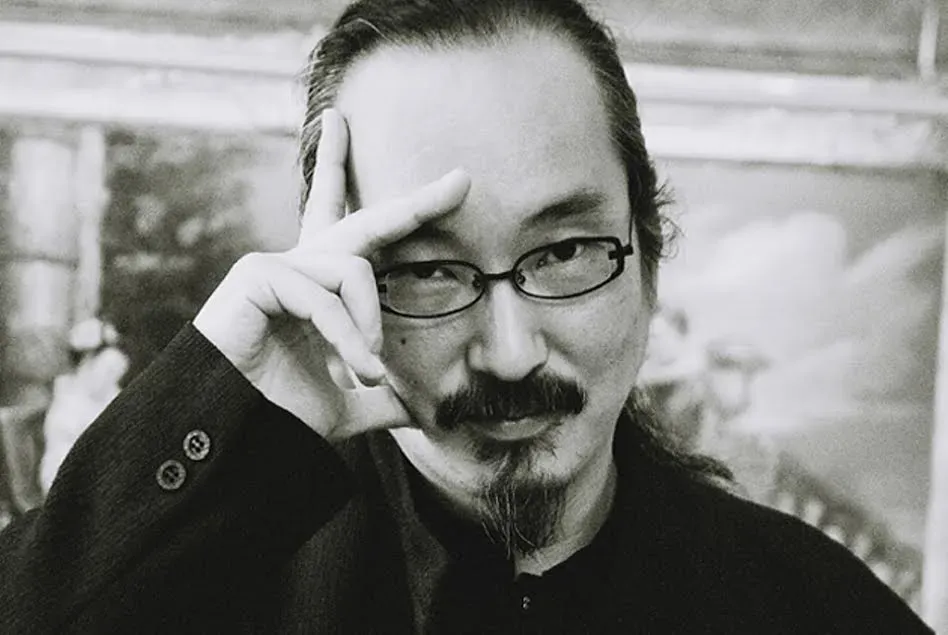
Wtf happening to JAniCA anyways?
First Miyazaki, then Kon?
JAniCA, retirement securing organization turned poster boy of anime unionization, was one of the closest ventures towards unionization the entire anime industry had seen in its history.
Sure there was the Toei union, but as I said in the video, what is a union meant for just Toei animation gonna do for the 99.9% of non-Toei animation folks out there?
There was also the first EISANRO union that consisted of a lot of movie companies (assumedly including some animation companies) in the immediate aftermath of World War II, but they only managed to do a handful of things before being shutdown by... the US military? For being too... militant about their unionization efforts? I don't know why the occupying military would be concerned about some random Movie union getting too zealous when that was their idea in the first place but history acts in weird ways I suppose. The second EISANRO union was formed in 1965 and was mainly just for film and television, moving away from animation.
So with all that being said, how did JAniCA fail? It wasn't one particular company's fault, nor was it forcefully shutdown by a foreign military. In fact, at the time it seemed to the big buzz around as so many influential people seemingly finally came together to put an end to all this shit the anime was going through once and for all.
While I'm not particularly well versed in JAniCA's history, I can say that as much as JAniCA was an exciting prospect for many animators, for many others it was also the opposite. For reasons that are more tied to general Japanese culture than anything else, unionization has always been a taboo topic in the workplace, especially in anime. Many people don't even want to mention they gave the idea of unionization a thought because it's just not conforming to the social norm, in a country where conforming to social norm is an almost sacred principle.
However, the will for a union to work is just as important as people wanting to join it in the first place. And while the hype and hubbub about JAniCA was palpable at first (as always with any new happening), continuing that "hype" and actually sustaining it over the long term is an extremely difficult thing to do - especially if your founder leaves.
Toyo Ashida
Founder of JAniCA - and he left?
While I never got any definitive answer to what caused Ashida to leave - whether it was infighting, age, or otherwise - I do know that he did leave. And regardless of whether or not the departure was adversarial or not, the fact that Ashida departed marked the beginning of the end for JAniCA, with the government it so relied on for support being voted out of power another fundamental happening that dampened JAniCA's future.
And for the existing members at the time, which, since it was originally a union meant to guarantee member retire benefits, included a lot of experienced (and assumedly influential) figures in anime, those two things were pretty much the last straw. With no leader providing a clear vision and no backing by the government, most of the older folks got jaded towards the situation becoming any better and promptly left.
Without government backing, without their founder (left and then deceased), figureheads (left and then deceased), and now without many influential members, JAniCA pretty much imploded. This is not to say that JAniCA doesn't still exist - it does, and if any unionization effort was to commence I'd probably give JAniCA to be the breeding ground for it - but that it's out of its prime and way out of the limelight.
Some sources also said that internally JAniCA was struggling with administrative and legal stuff as articles of incorporation were muddled, but is yet to be definitive.
Either way, the blaze to change anime burned out with JAniCA. Regardless of whether or not it was the union's fault that it failed, it reinforced the uselessness of unionizing and the hopelessness of the anime situation simultaneously. With so much money flowing to the top of the pyramid, it would have to take another cohort of influential animators to really revive the movement, which brings about the final, and probably most important question:

The Production Committee
Why?
Tezuka is second to the Production Committee as the thing that ruined working in anime. And to be fair, it makes sense. They're the ones that are the controllers of the money - what would it hurt them to maybe take a million or two out of their ginormous buckets of profit to make it so animators can eat?
I honestly don't see any real counter argument to that notion, and it seems like anime studios don't either and got markedly tired of it. Bocchi the Rock and Chainsaw Man were two examples of animes that were fully funded by anime studios, and achieved tremendous amounts of success. In this way the anime studio can confidently get all the credit and money from its own creation, and compensate its employees accordingly (hopefully accordingly)
Does that mean every anime funded by anime studios succeeds like that? No. Not at all. And falling prey to survivorship bias is dangerous when it comes to these cases.
However, the aforementioned "studio confidently getting all the credit and money for its own creation" is probably the most mind boggling thing for a lot of people (as well as me when I was researching the topic). How could people who worked on things like Demon Slayer not get tremendous amounts of money from such a giant success?
Well, besides the fact that the Production Committee owns the "stock" that is anime, the more important thing they own (that was not mentioned in the video) is actually the IP itself
Copyright:
And studios selling it to Production Committees
I'm not sure where this trend came from, and to be honest I'm not sure how it even became a concept. Through tradition, contractual obligation, or something else, most studios sell the rights to the things they create to the Production Committee. This sole action means that the studio does not receive royalties/commissions/anything else related to the success of the series.
This is also combined with the fact that anime studios are often the bottom of the command chain when it actually comes to making anime in its entirety. The Production Committee is the fundraiser and therefore the legal owner, but even TV stations and media conglomerates of the sort have more power than studios as the anime will never make the light of the day unless the stations allow it to be aired.
So with all that said (and much more still unsaid which I plan to cover in a livestream sometime), the ultimate question comes to bear:
So... How do we fix this again?
To be completely honest, the video was supposed to originally be just about anime's issues, not about any solution - and that's pretty apparent in the relative size of the sections, with over 80% of the video just detailing anime's issues. But after looking it over and then looking at the YouTube landscape in general, I thought to myself, "Does this platform really need more pure negativity?"
The answer is no.
However, even beyond that, coming up with solutions to a problem that Miyazaki nor Satoshi Kon nor Isao Takahata nor any of the other countless numbers of actual influential people in the field could actually solve, is a bit of a tall order.
Though, this only refers to the practical specifics of a solution to the issue, not theoreticals. In fact, the there are only two theoretical paths that anyone could really go down in addressing the issue, the first option being:
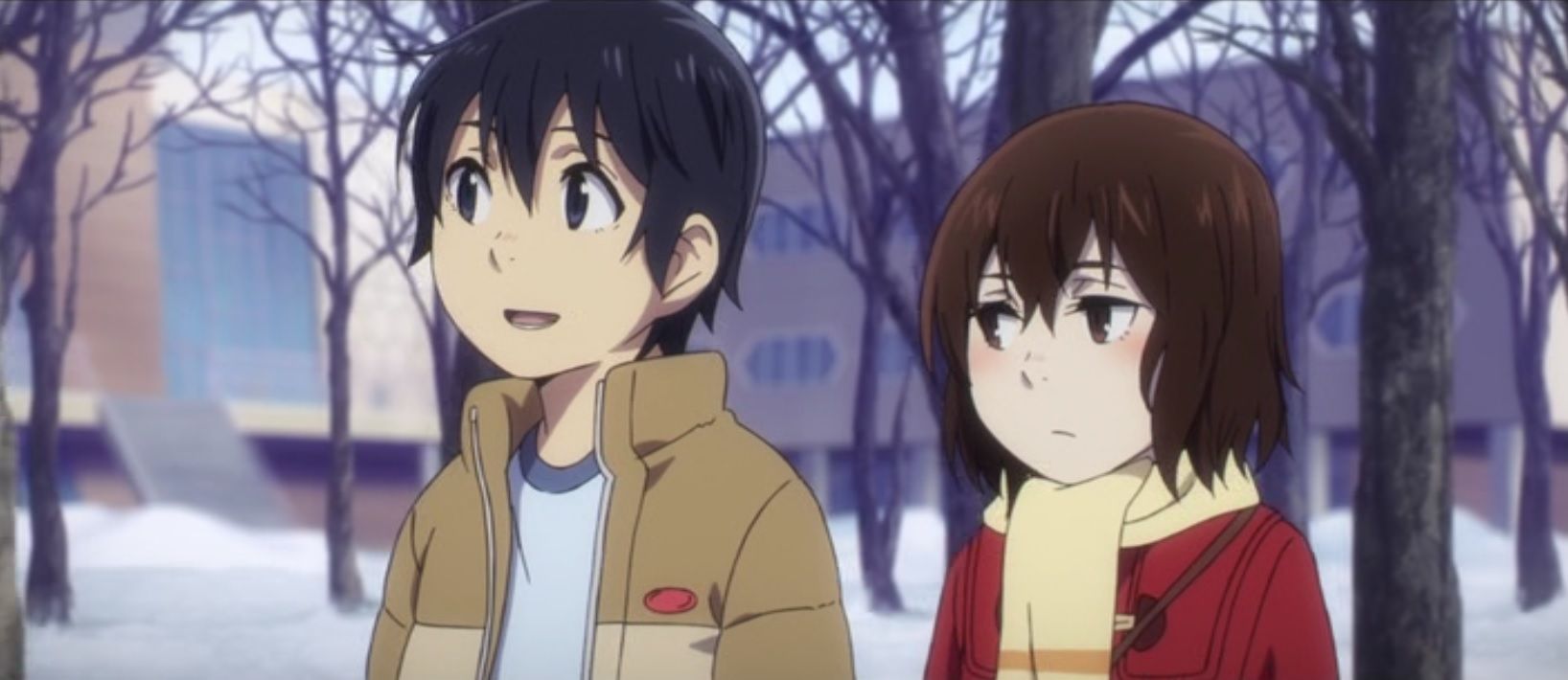
Time:
You really think people will be happy with this?
The problem with anime comes down to the fact that people are working too much for too little. And while now we know that Tezuka was the one responsible for setting up this weekly upload norm, who's to say that we can't change it back?
Even reading that sentence likely made some of us feel uneasy, and that's for a good reason. The weekly and seasonal rotations of anime are almost synonymous with weekly uploads.
That's just how things are.
And as mentioned before, the general public likely would not like the fact that their weekly anime is now reduced to biweekly, bimonthly, or worse.
But even beyond that, time is really the smaller of the two problems here. Investment bankers work 100+ hours a week and that's seen as completely fine. What's the difference?
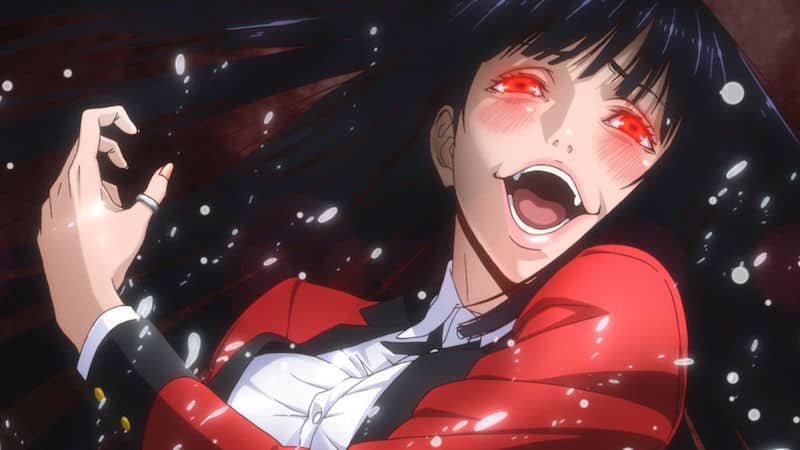
Money
Anyone who says this show was not weird in some way is objectively wrong
Investment Bankers' sometimes $100+/hour and $150K+ a year salary is not even in the same league as animators' sometimes <$1 an hour wages. Both are life-changing amounts of money no doubt, but one changes lives for the better, and the other makes people end their own.
However to be clear, the money problem is not that animators don't make anything, but that it's not enough compensation. In simpler terms, the pure fact that animators are making less than $1 a day would not be an issue if the daily cost of living (food, shelter, water, etc) was $0.01. However, the daily cost of living is much more than $0.01 (as you probably already know).
This is a fact that goes almost without saying - so much so that it's kind of like, well, why am I bringing this up?
Because, the money path splits here accordingly into the two parts of the equation, one being increasing animators pay, the other reducing their expenses, so let's go over

1. Increasing animators' Pay
Realistic? You Decide.
The first path is to increase animators' pay - and to be brutally honest, this the only real solution of the two paths.
This is because all the problems in anime pretty much stem from the fact that no one is paid enough. Pay animators $150K+ USD a year and I don't think anyone would bat an eye.
The problem with this however, is multi-fold. And the first you can probably guess:
Companies don't like giving up money. Production Committees have operated under these current anime budgets for pretty the entirety of anime's history, and the chance is so low that you'd be able to convince any Production Committee to raise enough money to pay decent wages to every animator there is on a team that the probability of it might as well be negative.
And to be honest, there may just too many animators out there.
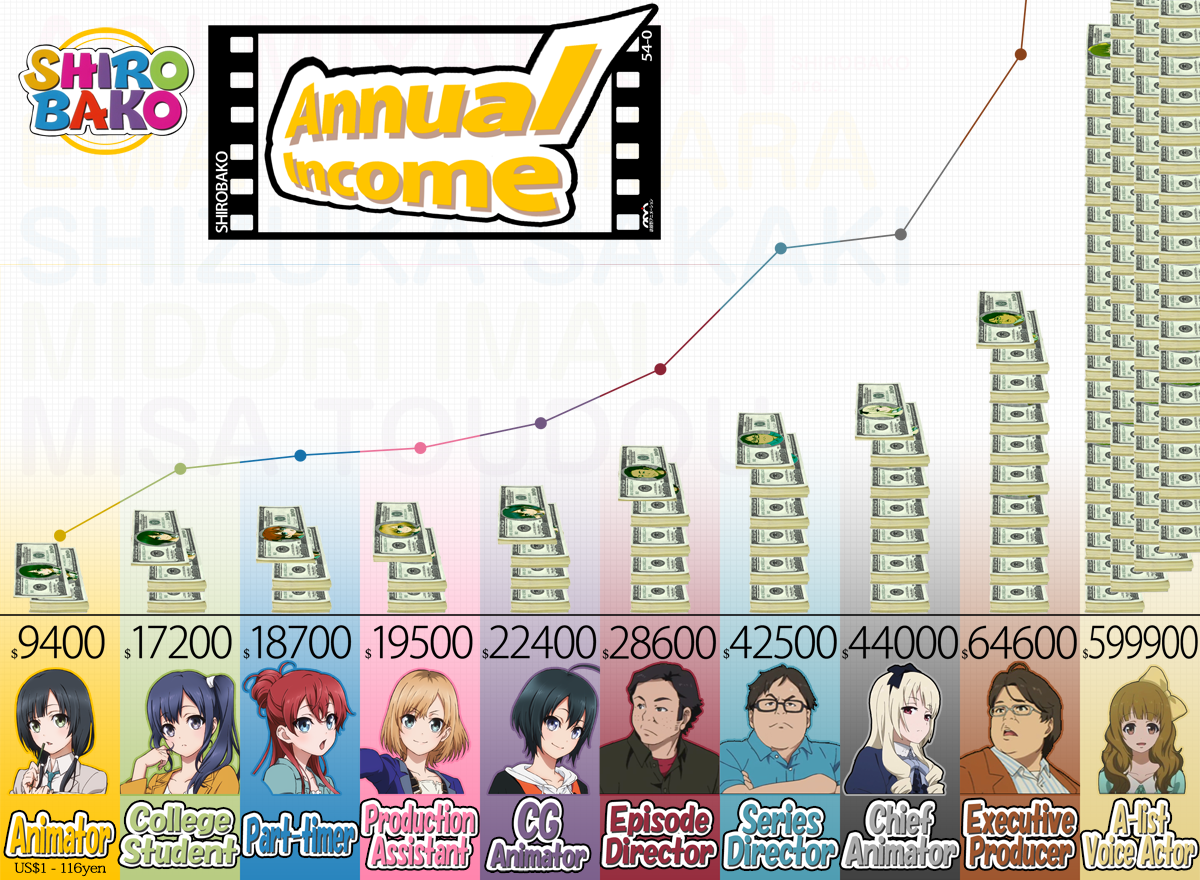
What the hell does that mean? Well, it's not like all animators are equal in their positions. Just like the regular corporate world, more senior and skilled artists are put in higher positions that pay more ("more") while more junior and inexperienced artists are the ones that are dealt the whole $5/day bs that is usually the outrage that most people see. And it is coincidentally the fact that those on the bottom of the ladder are the ones that are usually the ones that are outsourced.
The actual anime production process wasn't actually covered in the video much as the specifics of it aren't particularly important in the grand scheme of the financial system that dictates what makes anime to be made; however, delving into the specifics of paying animators more does require at least a cursory knowledge of it, so let's take a brief detour (and I mean really brief)
A Hyper-oversimplified view of how anime is made:
If you want to know every specific detail of this this is NOT the article to read - pictures, examples, and more detailed descriptions from here
To simplify the pipeline for our purposes, all we need to understand is the basic logic that drives the pipeline:
- What the anime looks like must be made
- The most important keyframes have to be drawn
- Every frame in between the above has to be drawn
- Everything must look consistent, correct, and satisfactory.
So let's start from the top, beginning with:
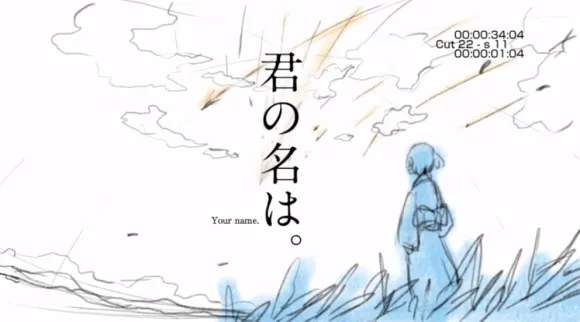
1. Deciding on What an anime should look like
The Top of the Ladder:
In every form of visual media, regardless of whether it's a movie, anime, cartoon, etc, etc, the most important part is someone actually deciding what it should look like.
"What it should look like" is much more than just what a character should look like or what colors we should use - in fact, in western media those are the jobs of the character designers, photography directors, color correctors, costume designers, scene compositors, etc, etc, etc. But even despite this, someone still has to put together the whole thing and dictate how all those environments, characters, dialogue, music, etc plays together.
This is what the director is typically responsible for, and it comes in the form of a storyboard:
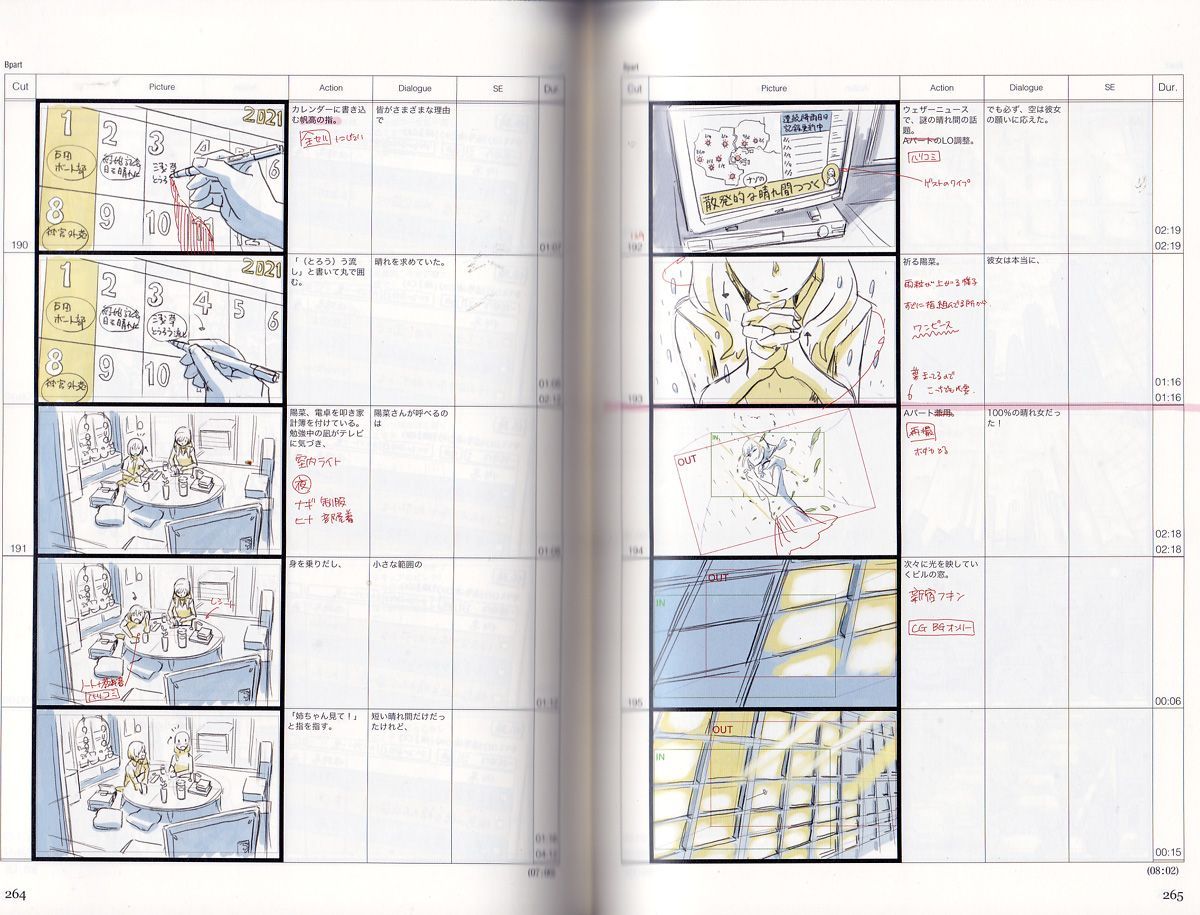
As you can see, there is a lot going on here - from compositional shots to where light and shadow should fall to camera movements, dialogue, music, and shot time down to the frame, all of this is the job of the director.
The literal creation of an anime is not an easy job, given to only the senior and most experienced. Accordingly, the directors are compensated fairly.
Well, not particularly fairly as compared to their western counterparts, but directors aren't usually the people that are struggling to make ends meet. This was the group that JAniCA was originally meant to serve: those people that had been in the industry long enough to the point that they were considering retiring.
And so while anime directors' pay are very much deficient as compared to the responsibilities they shoulder, the discussion here is not particularly aimed at them.
It's everybody else:

"Everybody else"
After the directors essentially create the anime, in come the people that have to actually execute on that vision - the people who actually have to draw the frames.
The director in the storyboard laid out the keyframes of the anime, but those keyframes are pretty much never detailed enough to actually use straight up in the anime. After all, the director doesn't have the time, he has everything else to worry about.
The storyboard is indeed just the first draft. The process of getting to the second draft involves the delegation of who will do what at what time (typically job of the administrative staff) and the people who have to go in and make the keyframes that were present in the storyboard actually usable.
These "making-keyframes-usable-for-staff" people are referred to as the LO and the Nigen people, who are responsible for turning storyboard keyframe into a less rough keyframe and then going from less rough keyframe to detailed specific instructions on how everything should look.
In practice it looks like this - the director's storyboard frames are taken from here:

To here:
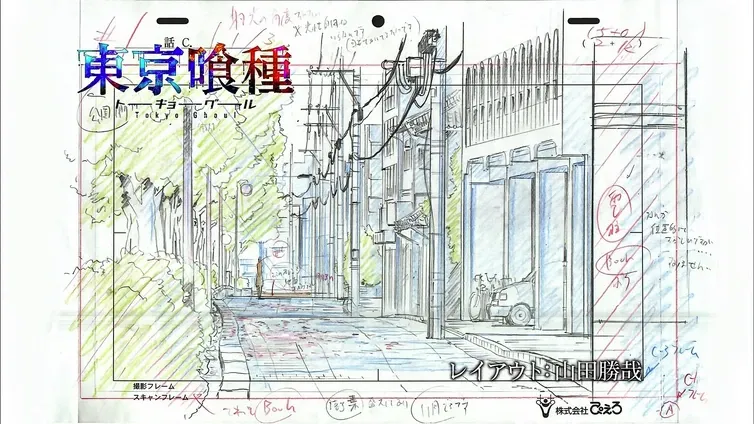

Collectively, these two processes are known as Genga (原画). From here, the anime can actually be made - the directions from the nigen on where light, shadow, and color should go (the different colored circles and regions on the second picture) and the more general directions from the layout goes to the people responsible for making the anime look like an anime.
This invokes the job of the people generally at the bottom portions of the ladder - past the storyboard (絵えコンテ), layout (レイアウト), genga (原画), and nigen (二原) and into the realm of the douga (動画).
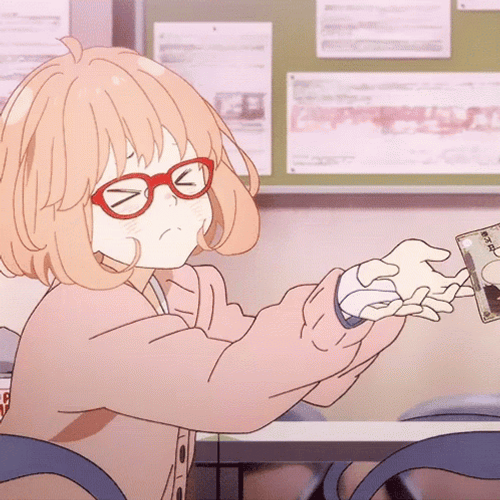
動画
Welcome to the bottom:
Douga people are the most junior people on the staff, and typically the ones that are outsourced. Sure genga, nigen, LO can all be outsourced, but those are typically key positions that need to have quality control or else the entire anime simply falls apart.
And as for the director - well, as mentioned in the end of the video Satoshi Kon's movie Dreaming Machine is still incomplete, even though he made the storyboard for it and even part of the Genga. That should be a pretty good idea of how unacceptable outsourcing anime directors is.
Douga though is different. After all, the douga-men are simply following instructions, whether from the LO and nigen "more-refined-drafts" or from the principles of animation that dictate how it should be drawn. This means that the douga-men are the ones that are outsourced en masse to the people who will do it for the lowest pay, and as a result are the ones who are dealt the $5/day treatment.
But aren't their jobs important too? If the director and genga-men have to get all their stuff perfect, wouldn't a botched execution just ruin it all? And if that's the case, why is this position so neglected?
Well, as you probably remember, there were not 3, but 4 points in the logic of animation production. Past all the drawings and creation of the anime, there is the extremely important facet of:
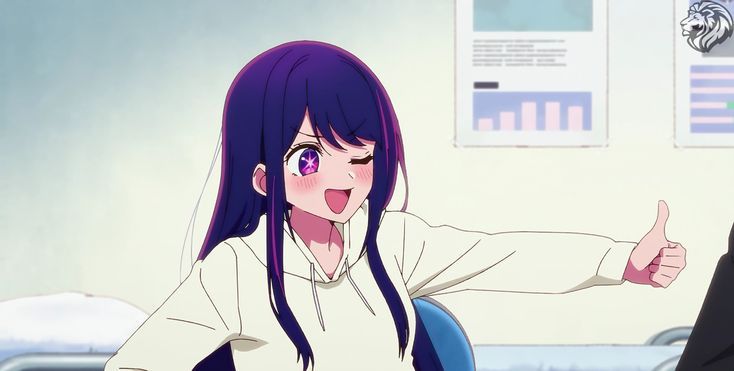
Quality Control (QC)
Correct, Consistent, and Satisfactory:
Anime production, as you may remember from the video, isn't a case of each person finishing their job and then just leaving. If that was the case then douga probably wouldn't be outsourced at all - with no one to QC the douga people they would have to necessarily be extremely good at it, and then be compensated better than what they're compensated at time of writing.
The only issue is that the system isn't like this. And honestly, it wouldn't be possible for a "go home when you're done" system to really work. The only person that knows how they want the anime director to go is the anime director themselves. Same with genga. Same with nigen.
Douga though? Not so much. At the bottom of the chain and the most junior position, douga-men are never going to be expected to get everything perfect. In fact, everyone short of the executive producers and directors themselves is never going to be perfect. Of course, the executives are not perfect either by merit of being human, but their drawings is the reference that everyone else goes off of.
LO, Nigen, Genga, Douga, whatever terms you throw around that aren't the directors and executives, will have to be checked. The Genga by the director (of genga, LO, or the executive director himself), the douga by the genga, etc., etc.. The rule of thumb here is that if someone is below someone else on the ladder, that someone will be checked.
And while LO, nigen, and higher up people on the ladder may only be checked once or twice, douga people tend to be checked multiple times.
By the genga people.
Who now need to do their own work, check douga mistakes, and correct their own mistakes.
And because of the fact that douga is outsourced en masse with QC not even close to those of the more experienced people, this means that now the more experienced people need to check douga peoples' work (often very obvious and glaring mistakes) as well do their own work, and their own checked work.
This compounding chain of responsibility moves up the chain, meaning that now pretty much everyone needs to check everyone else, essentially brute forcing QC by way of repetition until perfection.
The whole issue of ill-trained douga-men has seen very gradual solutions, as anime studios post guides and documentation on how they want things to be done and how things should be done in terms of following simple animation principles.
But the issue still stands that there is not enough newbie training. And in the words of a friend who has experience in the pipeline but rather stay anonymous:
All these people get a gig being a [douga] in an anime and they suddenly think they're hot shit, even though what they make is pretty much unusable. But they think they're hot shit, so they're terrible to work with, and their work is terrible, so...
So.... wait, why did we go into this whole "how anime is made thing again?"
(I talked to this friend afterwards and he said that he was talking about the nigen people... which means that this problem is worse than we thought)

Increasing animators' pay
Japanese animators' pay, as compared to western counterparts, is hilariously deficient. It's almost not comparable.
However, the problem gets exponentially worse as you move down the chain of command until you reach the douga, which are the most egregious cases.
The only issue with fixing the most egregious cases is that there will always be someone that would be willing to do it for less. The bottom line is the thing that companies care about after all, and so even if a certain number of outsourced animators decide they want higher pay, companies will simply go to the people who are willing to work for that pay.
Typically, labor unions and collective action are the solution to this, but outsourcing ruins all of it because there is no way an international union of douga-men can function, making fixing the douga-men issue quite impossible.
Up the chain, as people get less and less outsource-able, the possibility for collective action grows - though as evident by JAniCA's failure, it's still really really hard.
So short of asking Production Committees and companies to "please give animators more money because it's the right thing to do" and shareholders and the stock market to "stop expecting infinite growth on a planet with finite resources," it is unbelievably difficult to reconcile the money situation at the bottom portions of the ladder. There was never any labor union directed at douga, and likely never will be until outsourcing is stopped completely.
So if increasing animators' pay is almost impossible, we must go to the second path:
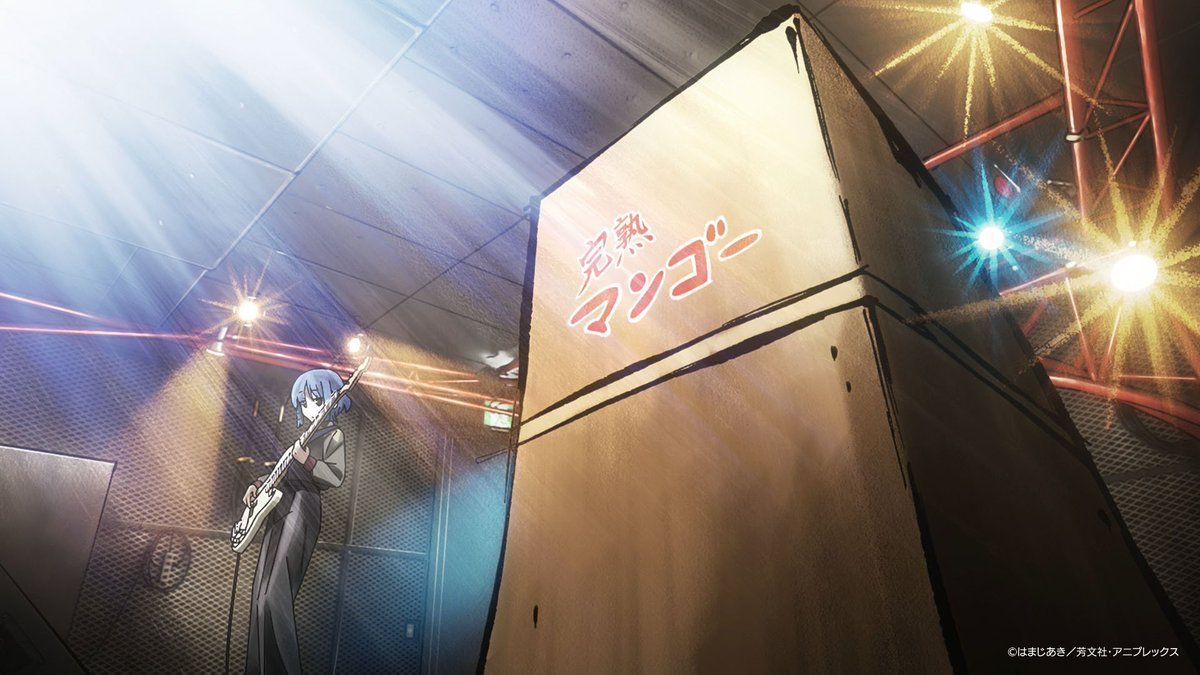
Decreasing Expenses
While it's the temporary solution of the two, decreasing animators' expenses is by and aways easier to do than paying animators more money because of the current situation of... well, society.
And to this end I don't really have anything to say since you can come up with any number of ways to decrease expenses - however the most popular way it seems (historically) is to pay for animators' living expenses.
Whether it was Anime Mirai or another reincarnated version called The New Animators' Dormitory Project, decreasing living expenses has proved the easiest since you just need to get enough money to pay for a house.
So if you want to, go ahead and donate to The New Animators' Dormitory Project. They didn't sponsor the video or this article or anything at all (I reached out to them for an interview but they never got back to me after I posted my questions...), but from what I see it's a genuinely good cause, managed by someone who used to be an animator himself.
Personally I want to eventually find an organization like that too, but based around the concept of direct dispersion of money to animators. But I'm some random college kid in the US who has never worked in anime. So.... yeah that'll probably take a while.
But if this is the solution (temporary as it may be), why didn't I mention it in the video?
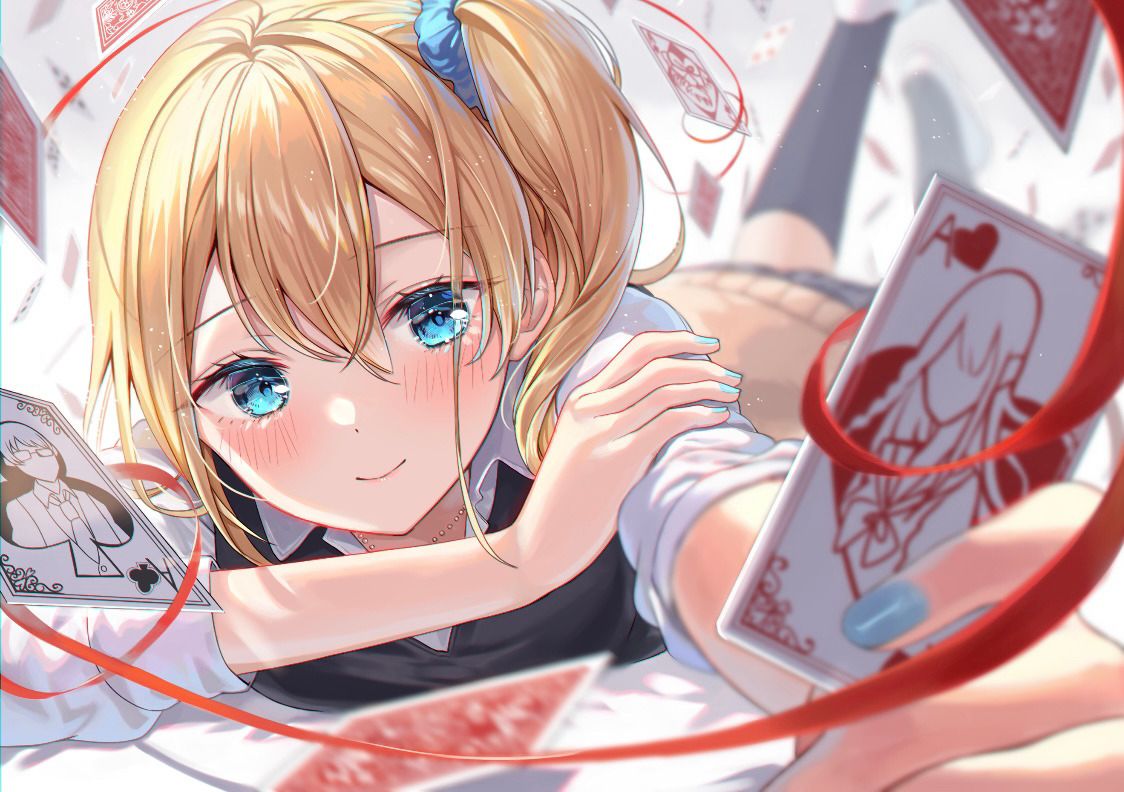
The Power of Exposure
Beyond the fact that I felt like plugging in a charitable foundation at the end of a video would feel like undisclosed sponsorship and just generally feel weird (even if I did explicitly mention they didn't sponsor the video), the power of the general public knowing about a problem is not to be trifled with.
Most problems in the world exist because there is not enough will to actually fix them. This goes for everything from climate change to animators being underpaid - whether lack of political will (due to whatever reason) or lack of will of the general public out of pure ignorance or otherwise, a problem needs to have a certain amount of people who want it to be fixed in order for the solution to actually come.
This is why the time path of the solutions crossroad is probably infeasible - it's not because it's impossible to do (it's as simple as flipping a switch really), but there would be no support from pretty much anyone to have anime go from weekly to biweekly or monthly or whatever.
Giving animators more money - well, there's not enough political will or will from companies to do so; but reducing animators expenses? Well there is a will, the will is just too small to really make a difference across the industry.
This is the principle reason why I made the video - not to go into the weeds and propose a detailed solution plan to a problem that people by the likes of Miyazaki, Takahata, and Kon were ill equipped to face (let alone me) - but to try to take action on the one facet of the solution that I really can make a difference in:
Letting people know about it.
Because at the end of the day, letting people know about something is half the battle to creating more public will to fix something. After all, most people don't even know that they don't know what's really happening behind the scenes. And out of the entire population of anime watchers there's a very small subset of them that know enough about the absolute state of anime to the point where they're motivated to act.
So at the end of the day, that video and this article serve just one purpose - exposing the issue. Only when the issue is exposed to enough people can any progress be made to reconcile this situation, because without pressure from the general public, no company or government or etc will have any incentive to change anything.
So go out there.
Tell people about the problem. About the video. About this article.
And perhaps your word will spread to someone else, to someone else, to someone else, until enough people are in an uproar about the situation that the pressure forces things to change.
And you'll be a part of the solution as well.
